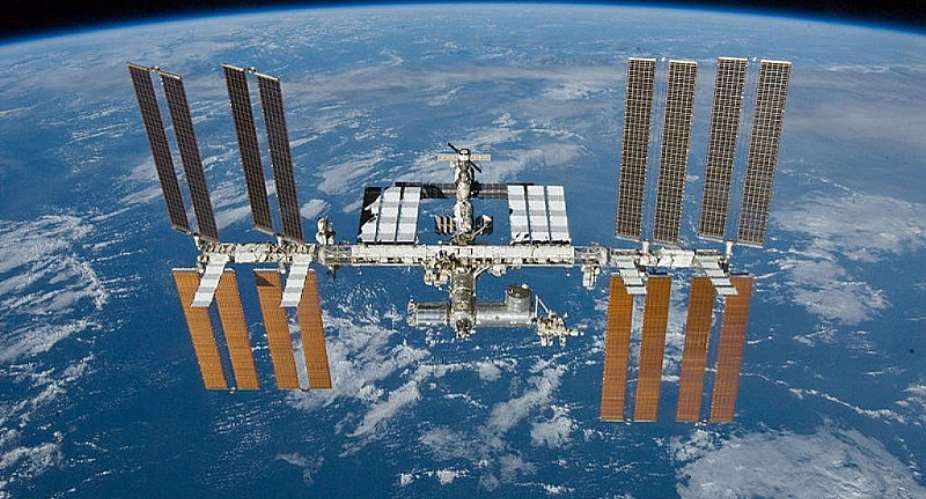The 132 billion euros feat of engineering and human ambition that is the International Space Station turns 20 today. Why today? Because on November 20, 1998, the first ISS module was launched into space by a Proton rocket.
While the ISS is easily recognisable with its distinctive array of solar panels - and while it's a regular feature on stargazing phone apps - many of us don't really know what the ISS does, exactly.
Fun facts aside (it weighs 420,000 kilos and is the third brightest object in the night sky after the Moon and Venus), the ISS is the result of landmark cooperation between many countries - notably the US and Russia, although 16 nations helped with its construction. Its main purpose is to operate as an high-tech international space observatory and lab.
British astronomer Mark Thompson, author of "A Space Travellers Guide to the Solar System" , says it takes a lot of resources to explore space, and the only way that can happen is if countries work together. "To get this massive great lump of metal, which is about the size of a football pitch, up into orbit travelling at 27,000 kilometres is an incredible feat - not just of engineering, but of political willpower - and it's great to see."
The world's laboratory in space, the final frontier, is also taking us to the frontiers of science - in fields of medicine, biology astronomy, meteorology and more.
"One of the great things about the space station is that it operates in this environment that we call zero gravity - and while the space station is subjected to the gravitational pull of the Earth, because it's in orbit around the Earth, it's kind of in a state of constant freefall - so it doesn't experience gravity," Thompson says.
"That allows us to do a lot of unique experiments that we can't do here on the surface of the Earth. In some cases it's been an offshoot of the space station's own development, so for example water purification systems that have been used to recycle water on the space station are now being used in the third world saving millions of people's lives by enabling water to be purified.
"A zero gravity environment also gives us the ability to look for vaccinations for viruses. Research can be done aboard the space station that we simply can't do down here."
It's an expensive endeavour, though. Since the year 2000, the ISS has been permanently staffed by rotating crews of astronauts and cosmonauts. Only three countries - the US, Russia and China - have human space programmes.
The Russian space agency sells round-trip tickets to space on its Soyuz spacecraft for somewhere between $20 and $40 million. Nasa, the US space agency , spends about $3 billion a year on the space station - and Congress is already considering extending the ISS program.
As things stands though, the ISS is due to reach the end of its operational lifetime by 2024, and Thompson says the next chapter will be commercial ventures in the form of spacecraft, space exploration and space stations.
"One of the big changes is that space flight and space exploration and research is becoming much more commercialised, so there are organisations looking to launch commerical space stations up into orbit around the Earth," he says.
"A company called Bigelow has been experimenting with inflatable space stations, and for a couple of years they've had an inflatable pod attached to the side of the ISS to see if it works. There's talk of that space station being launched around 2022, which should be before the end of the International Space Station, so there's absolutely interest in getting something else up there. We simply can't have a situation where we don't have regular access to space. We need that in order to develop science further."





 Dumsor: Don't rush to demand timetable; the problem may be temporary — Atik Moha...
Dumsor: Don't rush to demand timetable; the problem may be temporary — Atik Moha...
 Space X Starlink’s satellite broadband approved in Ghana — NCA
Space X Starlink’s satellite broadband approved in Ghana — NCA
 2024 election will be decided on the grounds of the economy; choice of running m...
2024 election will be decided on the grounds of the economy; choice of running m...
 Dumsor: We're demanding less; just give us a timetable — Kwesi Pratt to ECG
Dumsor: We're demanding less; just give us a timetable — Kwesi Pratt to ECG
 Do I have to apologise for doing my security work, I won’t – Simon Osei-Mensah r...
Do I have to apologise for doing my security work, I won’t – Simon Osei-Mensah r...
 All my businesses have collapsed under Akufo-Addo — NDC Central regional chair
All my businesses have collapsed under Akufo-Addo — NDC Central regional chair
 Military, Prison Officers clash in Bawku, three injured
Military, Prison Officers clash in Bawku, three injured
 GRA-SML contract: MFWA files RTI request demanding KPMG report
GRA-SML contract: MFWA files RTI request demanding KPMG report
 Court threatens to call second accused to testify if NDC's Ofosu Ampofo fails to...
Court threatens to call second accused to testify if NDC's Ofosu Ampofo fails to...
 Family accuses hospital of medical negligence, extortion in death of 17-year-old...
Family accuses hospital of medical negligence, extortion in death of 17-year-old...
